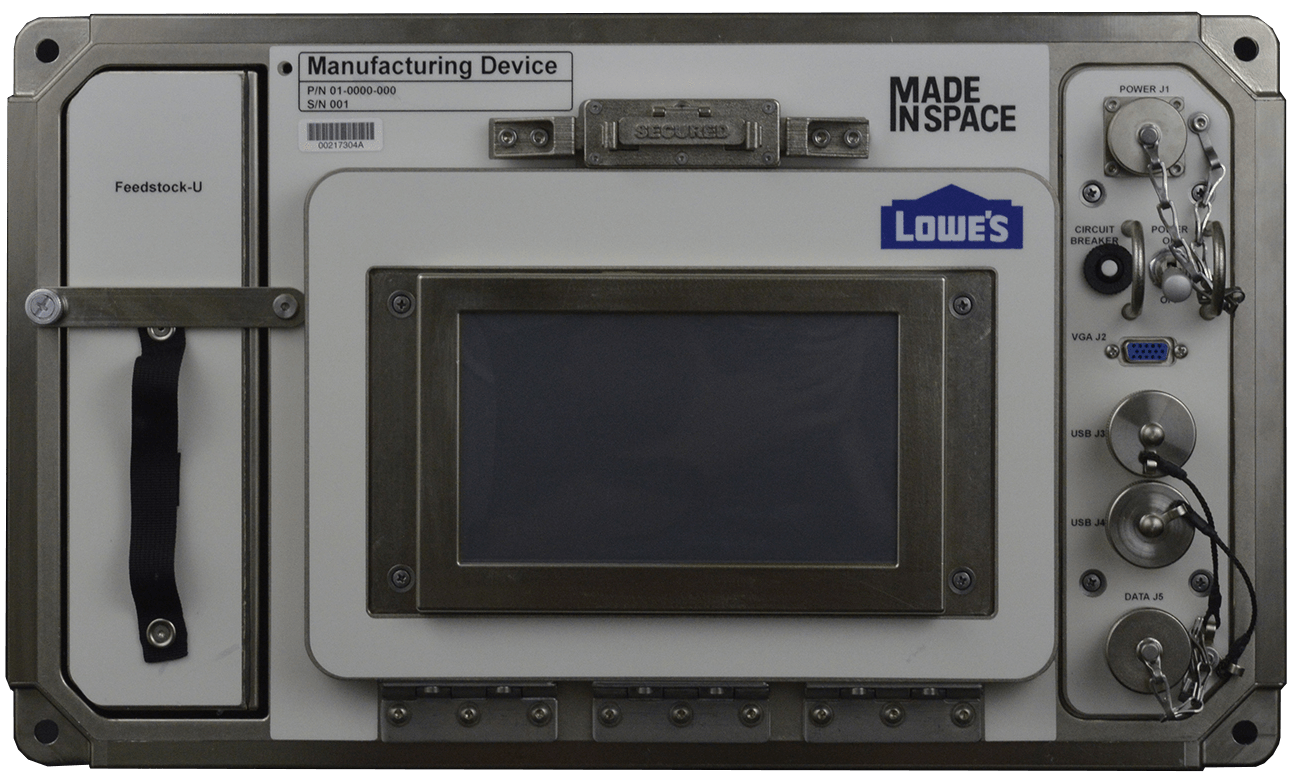
Tomorrow, Tuesday, is the scheduled date for the launch of AMF, Made In Space’s orbital manufacturing facility.
Made In Space is dedicated to developing 3D printing technology that’s usable in space. To that end, they’ve already successfully deployed an experimental 3D printer on the International Space Station, where it recently was used to print a number of test objects.
It was also made public that after the successful test, the initial Made In Space 3D printer was shut down and stowed away.
But that’s not the end of 3D printing in space by any means. Tomorrow, Made In Space will launch their new “AMF” (Additive Manufacturing Facility) device on a Cygnus cargo ship.
The AMF, shown at top, is a more advanced 3D printer that also includes the ability to operate in micro-gravity. But the difference is that it’s billed as a COMMERCIAL 3D printer.
What does that mean, exactly?
The printer will be remotely controlled from the ground, aside from the obvious physical tasks of loading and unloading the machine.
What will it print?
This is the most interesting part: the system is designed to accept print requests from commercial users on the ground who wish to have something produced on the space station in micro-gravity.
It might be a set of components for a new experiment. It could be a replacement part for a previous experiment where a component failed. It could be a new tool for astronauts to use. It could even be a simple souvenir – a true, space artifact, literally manufactured in orbit.
This is what it is: an orbiting manufacturing facility for hire.
Some ground-based companies are immediately taking advantage of this opportunity. Lowe’s hardware stores, for example, is partnering to print a number of Lowe’s brand tools in orbit, as you’ll see in this video:
They’re also duplicating the AMF setup on Earth in one of the California stores to show everyone how it works. To be sure, this is a publicity stunt, but, wow, it’s a good one.
But, as you might suspect, the rates are going to be pretty high. It’s not because those astronauts are charging high hourly rates (in fact I suspect their pay is pretty low considering the job they’re doing), but because the cost of placing the printer and its material in orbit is so high.
Currently it costs over USD$20,000 to put 1kg into orbit, be it a printer or a kilo of ABS White filament.
Apparently the rate for printing on AMF will depend on the amount of material and print volume used, and will typically range from USD$6-30,000! That’s pretty expensive, but remember the cost of printing and time to produce something could be far less than shipping it up on a rocket.
Hopefully, the cargo ship will arrive intact. If so, we will soon have our very first off-world manufacturing setup.
It won’t be the last.
Via Made In Space and TechCrunch

